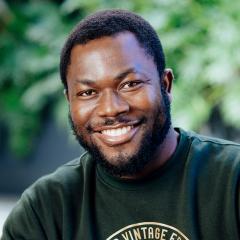
Image: Adobe
As the world marks World Environment Day under the theme “Beat Plastic Pollution,” researchers at the Queensland Alliance for Environmental Health Sciences (QAEHS) are drawing attention to the hidden and often underestimated sources of plastic pollution — from kitchen appliances to the human bloodstream.
A recent study by Dr Elvis Okoffo at QAEHS revealed that dishwashers, a staple in many households, can release thousands of micro- and nanoplastic particles during a single wash cycle. The research found that washing plastic containers — especially older or damaged ones — can shed tiny plastic fragments into wastewater, which may eventually enter aquatic ecosystems.
“People often think of plastic pollution as bottles on beaches or bags in the ocean,” said Dr Okoffo. “But it’s also what we can’t see — the microscopic particles released from everyday items right in our homes.”
QAEHS is also leading groundbreaking research into how these particles may affect human health. Dr Cassandra Rauert is developing advanced techniques to detect microplastics in human blood, using pyrolysis–gas chromatography–mass spectrometry (Py-GC/MS). Her work is among the first in Australia to explore how plastics may be circulating within our bodies.
“Plastics are now being reported in places we never imagined — from the bloodstream to the brain,” said Dr Rauert. “But the science is still catching up. We need better tools, better standards, and more collaboration to truly understand the risks.”
This call for scientific rigor was echoed in a recent Nature Comment co-authored by Rauert and QAEHS Director Professor Kevin Thomas. The article warns that without robust, reproducible science, efforts to regulate plastic pollution could be undermined by uncertainty and misinformation.
As global attention turns to the plastic crisis, QAEHS researchers are urging both policymakers and the public to consider the full life cycle of plastics — from production and use to their invisible residues in our environment.
“World Environment Day is a reminder that environmental health is human health,” said Professor Thomas. “And the more we understand about plastics, the better equipped we’ll be to protect both.”



